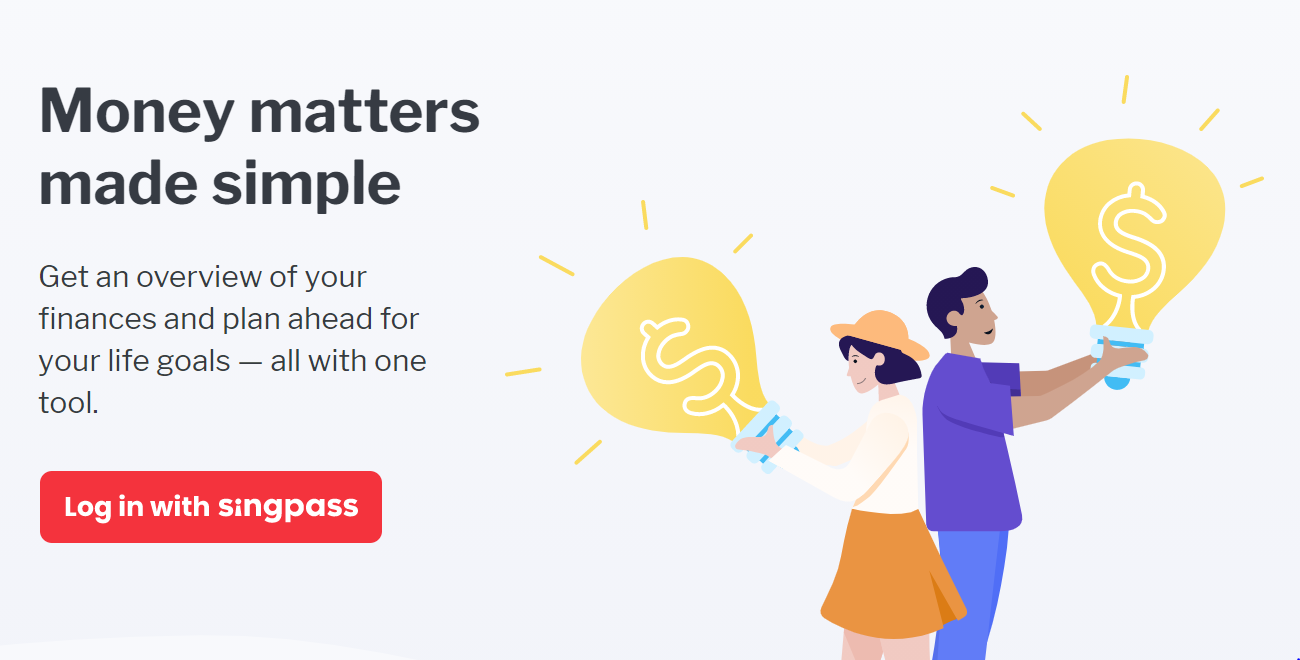How MyMoneySense can make financial planning less challenging
If you find financial planning painful, you can take some comfort in the fact that you aren’t alone.
Way back in 2017, the Financial Planning Attitudes Survey was conducted to understand Singapore Residents’ financial behaviours and attitudes towards financial planning.
From what was gleaned from the 2,800 responses, only 3 in 5 Singapore residents have started planning for future financial needs.

Common reasons cited for not planning were ‘having not enough money to start financial planning’, ‘thinking it was too early to start’ and ‘not knowing where or how to start’.
Mind you, this was pre-pandemic. With Singapore facing its toughest challenge since independence, last year was the year where people were forced to take a hard look at their finances.
That said, four years ago, the wheels had already been in motion to help galvanise Singaporeans into starting financial planning.
Enter MyMoneySense, a digital financial planning solution
MyMoneySense is a free, government financial planning service that helps Singaporeans better understand their finances, so they can make conscious choices to improve their financial well-being across different life stages.
By providing neutral, personalised and actionable guidance, MyMoneySense helps lower the barriers of entry for financial planning and helps Singaporeans get started.
It does this in three ways.
1. Consolidate. MyMoneySense leverages SGFinDex, a digital infrastructure that enables you to easily access your financial data across various government agencies and banks (for now) and receive a consolidated view of your finances.
The biggest value-add? It’s that you get to see your overall cashflow and net worth. This makes it easier for you to kickstart your financial planning and make better financial decisions.
2. Learn. In addition, MyMoneySense also allows you to learn more about your finances by using objective indicators and providing personalised recommendations to improve your financial health.
For example, one indicator is an emergency fund ratio, so that you know how long you can sustain your expenses in the event of a loss of income.
3. Plan. Saving for a goal 5, 10 or 20 years ahead can be daunting. MyMoneySense helps you work out the savings amount you need to stay on track and reach your goals confidently.
Curious? You can try it here.
A joint effort by private and public sectors
Leon Poh, 29, a Senior Business Analyst from the Ministry of Manpower (MOM), shared about working with other government agencies and the private sector to help citizens with financial planning.
“Financial information used to be very fragmented across different entities. Putting together one’s finances can be quite tedious and some people find it hard to make sense of all the information.”
To help individuals with this, MOM participated in the world’s first public-private partnership to build a public digital infrastructure, SGFinDex, to enable data consolidation across various government agencies and financial institutions. As there are many data fields that could be consolidated, MOM and other SGFinDex participants collaborated to identify the key ones that are essential for financial planning to help individuals, especially those who are just starting to plan easily.
Beyond mere consolidation of financial data, the team wanted to maximise the value MyMoneySense can offer to users who retrieve data onto the service.
“There’s a lot more that MyMoneySense can offer with SGFinDex. We could provide useful data visualisations, financial health assessment and personalised recommendations to help users improve their financial health.”
This was achieved by engaging MAS and the Institute for Financial Literacy (IFL) to develop the business rules and curate the financial health indicators. Several usability testing were also conducted to incorporate user feedback before implementation.
An engineering perspective
Sng Han Jie, 28, an Associate Software Engineer from GovTech, also shared his experiences working on the project.
One of the challenges he faced was the long lead time before the SGFinDex platform would be ready.
This led the team to re-think how they could design the application in a way that still provided some value to users before the central platform was ready. A beta version that encouraged users to save actively was released in 2019 using manual data entry by users. Through the beta version, the team was able to get user feedback and incorporate the learnings into the official launch.
Another challenge was in the consolidation of data through SGFinDex.
Sng says, “As we were the first users of the platform and the only service consumer to use OIDC(OpenID Connect) for authentication, there were many teething data issues that we had to solve along the way throughout all stages of the project (UAT, pilot, production).
These issues included misalignments amongst banks regarding error formats, receiving data with missing fields, and also receiving duplicated data.” We worked closely with all parties on the project to resolve the issues and the infrastructure is now more robust.
A true ‘agile’ project
In tech, we talk a lot about the ‘agile’ mindset, which puts a heavy focus on collaboration, improvement and learning cycles, pride in ownership, focus on delivering value, and the ability to adapt to change.
In many ways, the MyMoneySense project was an exemplification of those values.
The team collaborated closely with various stakeholders and adapted quickly to unforeseen circumstances to deliver multiple incremental improvements over the past two years.
And ultimately, they managed to deliver a product that will go on to provide real value by making financial planning far more accessible.
https://www.tech.gov.sg/media/technews/how-mymoneysense-can-make-financial-planning-less-challenging
